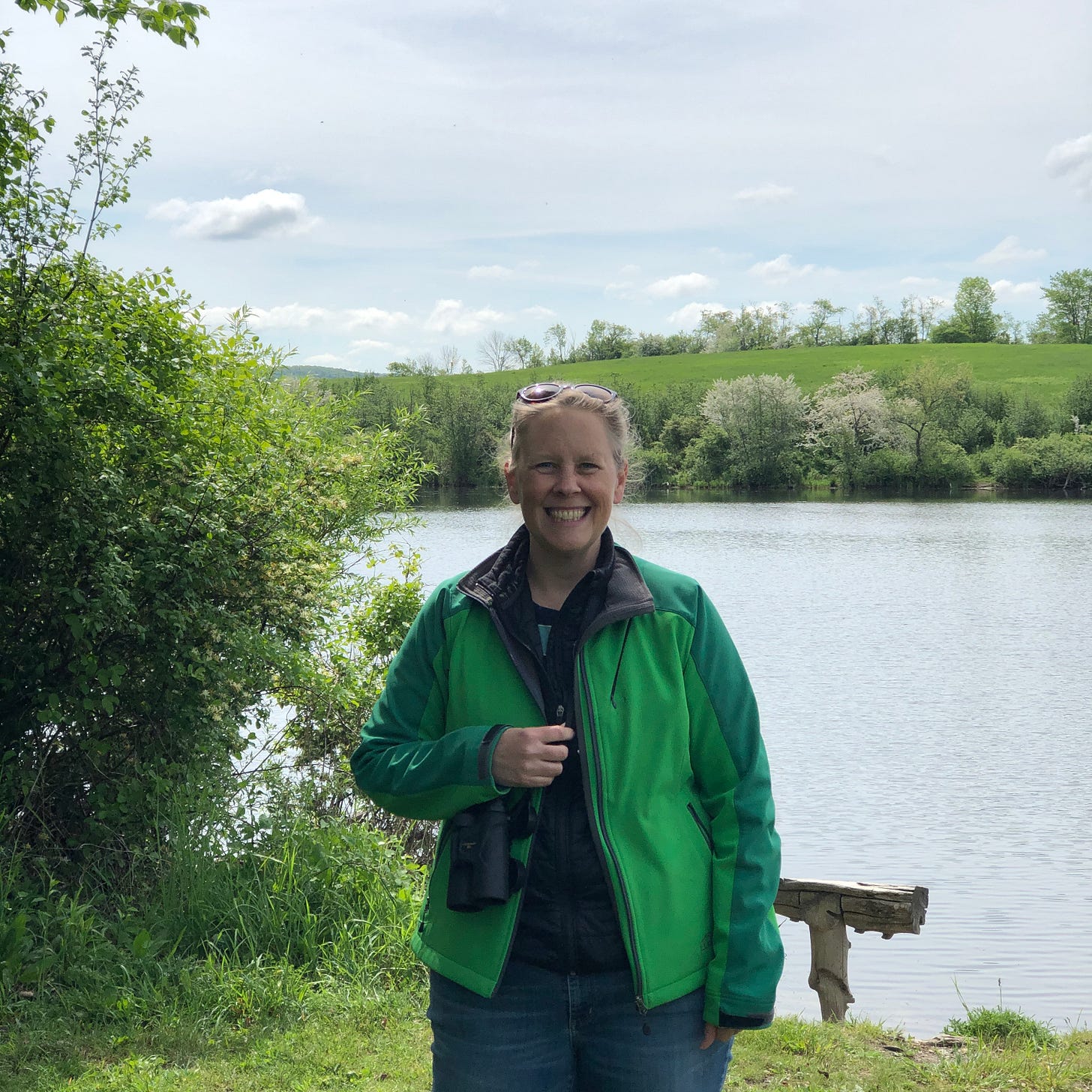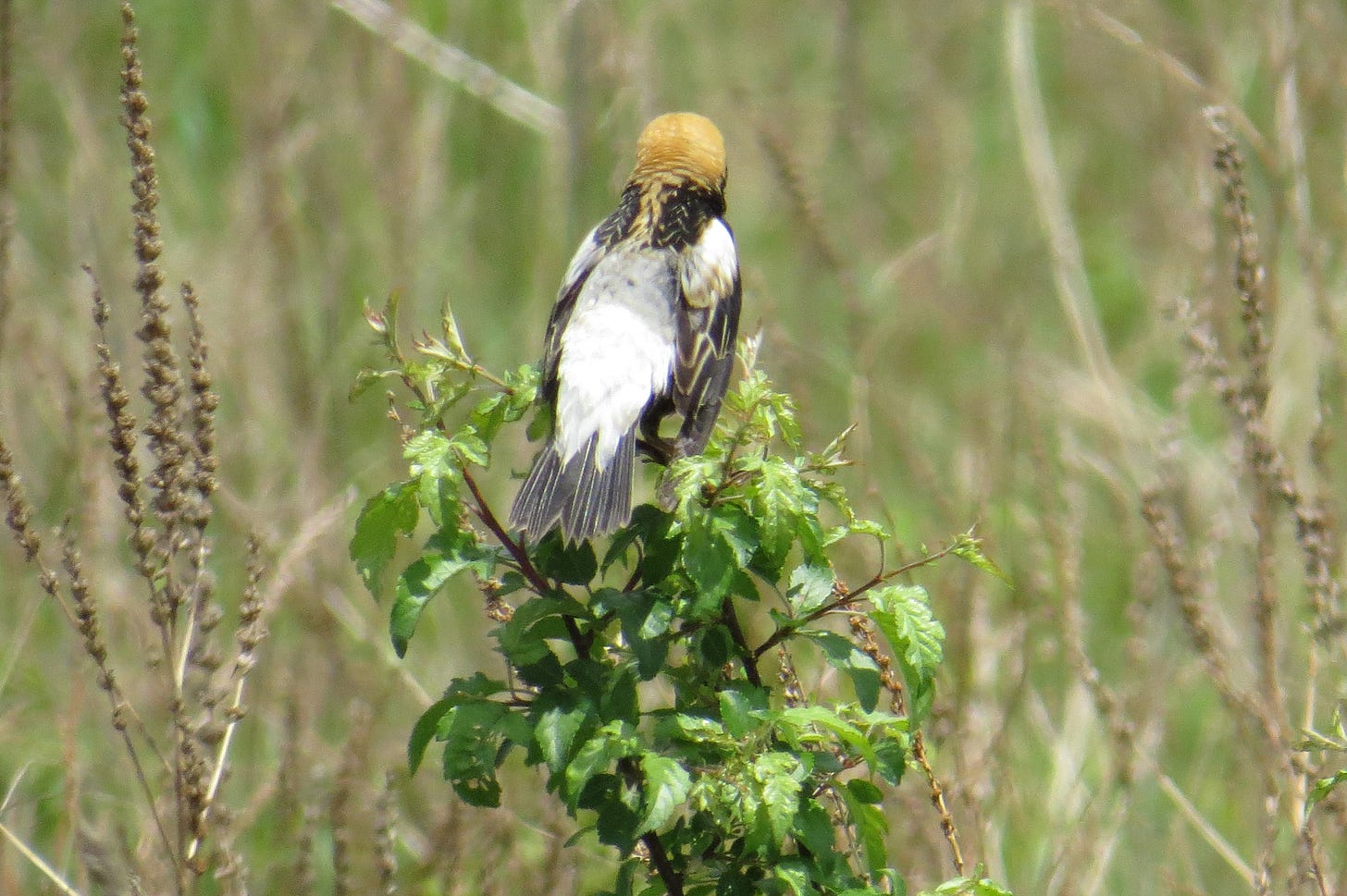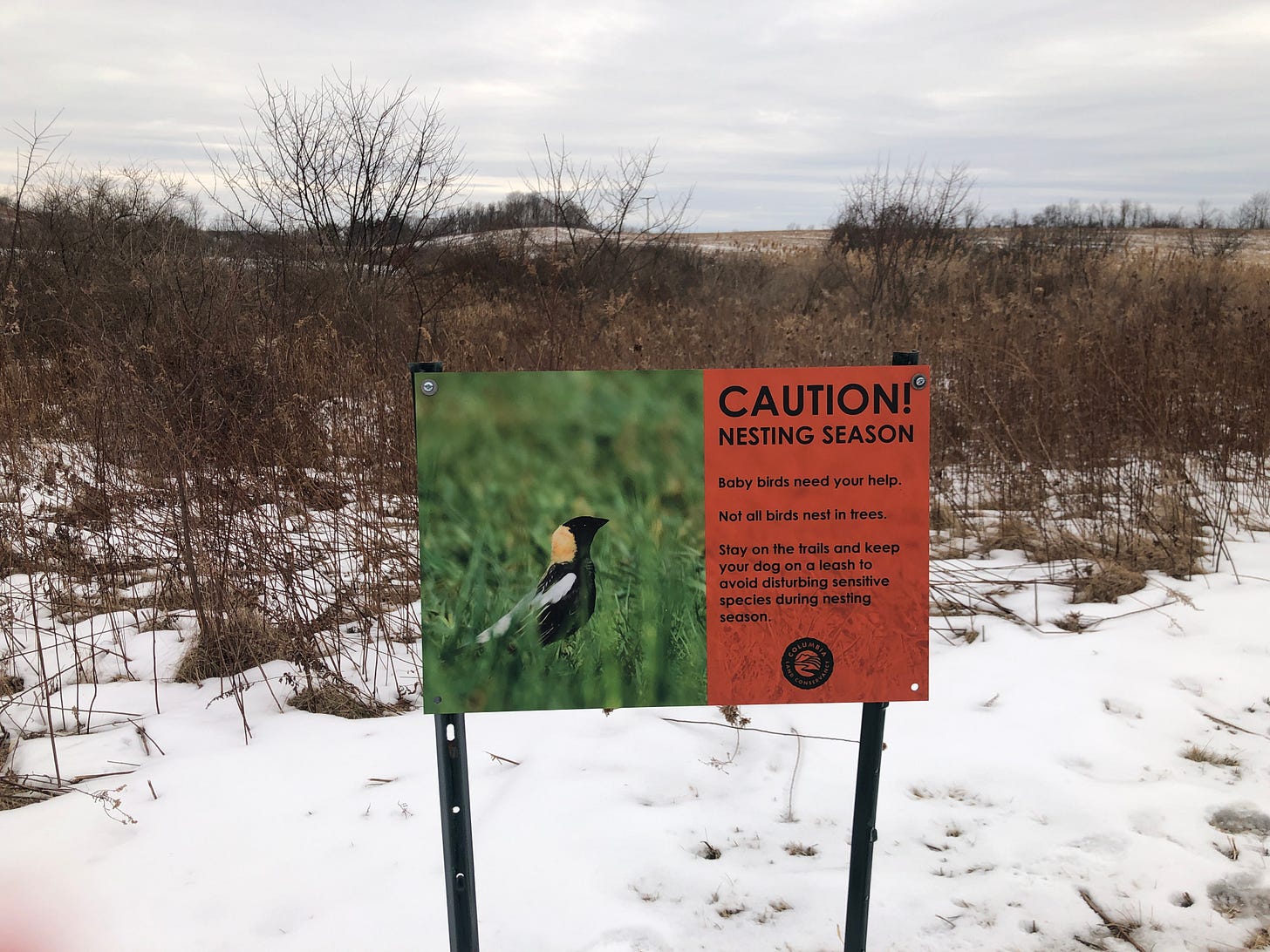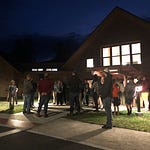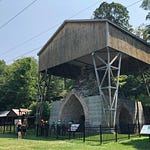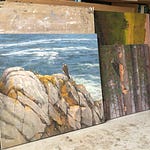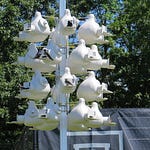In this interview, we explore the topic of off-leash dogs in nature areas and look for ways to approach the issue through conversation that fosters a sense of community instead of confrontation. To discuss this, Beakuency welcomes Heidi Bock, Vice President of Conservation for the Columbia Land Conservancy, a nonprofit land trust that works with the community to conserve farmland, forests, and wildlife habitat in Columbia County.
Compassion begins with recognizing that we can’t always see what others are going through. Heidi shares examples of wildlife whose presence may not be obvious but whose survival depends on our choices, including the ground-nesting bird Bobolink. She also discusses the CLC’s informational signage on its properties and its educational programs, which are designed to inspire learning and compassion—not just for wildlife, but also for the people we encounter on the trails.
Columbia Land Conservancy website: https://columbialand.org/
This interview was recorded at Ooms Conservation Area on May 17th, 2024 and broadcasted on Wave Farm’s WGXC 90.7FM on May 25th, 2024.
Interview Transcript
Heidi Bock: Thanks for having me. I'm Heidi Bock. I'm the vice president of conservation for the Columbia Land Conservancy, and I grew up here in Columbia county, and I've been with the organization for 18 years.
Mayuko Fujino: And could you also tell us what Columbia Land Conservancy is?
HB: Yeah, of course. The Columbia Land Conservancy is a nonprofit land trust, and our mission is to bring people together to conserve, appreciate, and enjoy the land. And we've been around for nearly 40 years, and we work with individuals, communities, and partners to ensure Columbia county remains beautiful, livable, and resilient. And one of the ways that we work to achieve our mission is with the 10 public lands that we own and manage throughout the county, like Ooms, where we are today. And these spaces are open daily, free of charge from dawn till dusk.
MF: And dogs are welcome at CLC properties, but there are some rules.
HB: That's correct. Dogs are welcome at all of our properties. And we ask that people keep the dogs leashed and pick up after them and carry out the waste from the site.
MF: Right. Which isn't always the reality. I really wanted to talk to you about this. I just want to find a way to talk about this without getting mad or making people mad, because it's really not necessary. How I came to this question was this past winter, January or February, I was taking a walk at Roe Jan park in Hillsdale, and that place has a big field, too. And I would come across [off-leash] dog walkers all the time and started feeling anxious about, well, [American] woodcocks are coming back soon, and then eventually other ground nesting birds will come back. And in February, I was like, maybe I'll say something in March.
HB: Right.
MF: And then March came, and I was thinking, maybe I'll say something in April. It's going to be the prime breeding time. And maybe that's when I'll say something. But it just made me so nervous, to even think of [it]. Even [to] talk to strangers is not easy. No matter how politely you say it, nobody feels good to be told [that] you're doing anything wrong. Even if I don't mean to hurt their feelings. It's just how we, people react.
HB: It's something that I think all organizations and state properties that own land that allow dogs struggle with a lot. We have signs up and we have the rules posted. Everybody thinks that their dog is okay off leash, and the thing is that, one of the reasons that we ask people to leash their dogs is, our properties we use as nature classrooms for our education program. So our educator brings groups of children and larger groups of people to the sites. And people might not want an unknown dog running up to them. Kids can sometimes be scared of dogs. Or the kids can scare dogs. You don't know what somebody's dog is going to react in a situation like that.
We want people to be able to enjoy nature. We want all people to be able to enjoy nature. Many people use our properties to go for walks and bird watch. And we really ask people to respect each other on the trails. And that includes leashing your dog. And having dogs on leash also, to your point about the woodcocks and ground nesting birds, it minimizes the impact to wildlife and not just to birds, because, you know, there's lots of other things that call these places home, that if you have your dog on leash, you don't have to worry about them running into other wildlife.
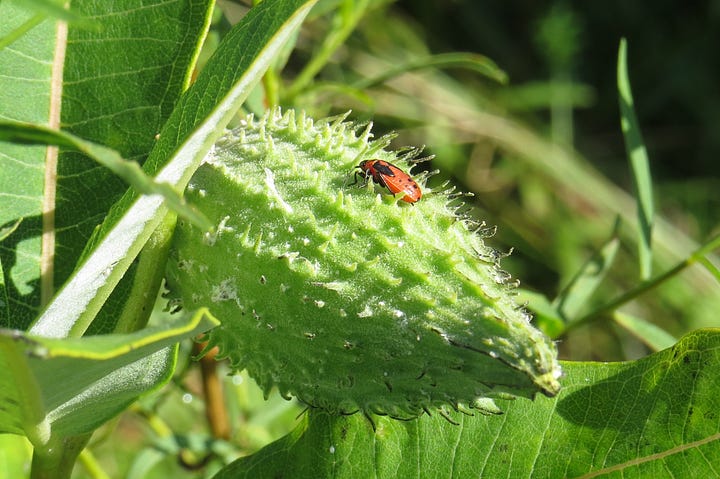
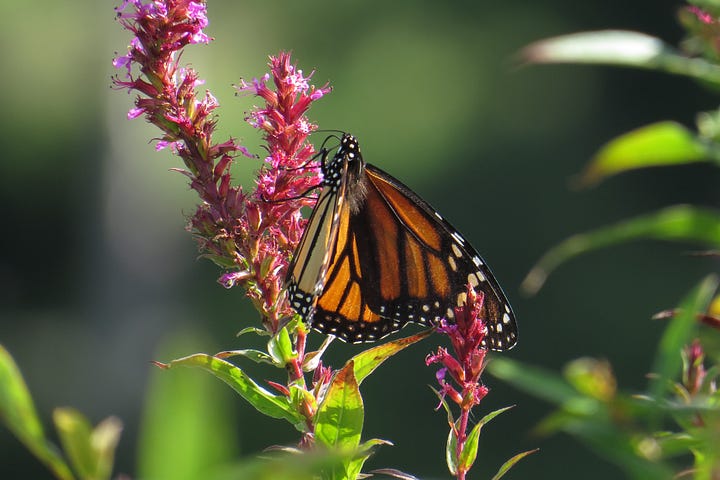
You don't want to be out here and have your dog come into contact with a porcupine or a skunk. You don't want to ride home in a car with a dog that's been sprayed by a skunk.
MF: I heard it's really horrible.
HB: Knock on wood, I have not encountered it, my dog has not encountered a skunk, but yeah, exactly. And so it's both for the safety of the wildlife and for the safety of your dog. We maintain the trails, and then the rest of the properties, we leave as wild as possible to provide that habitat. So we don't know what's out in those fields. There could be groundhog holes. We don't want you or your dog getting injured. And that's why we have the trails marked. And like I said, in addition to porcupines and skunks, there's lots of other animals like fox and squirrels, chipmunks, they call this place home. And the less we can disturb them, the better. That's part of our mission as a conservation organization is to provide habitat.
MF: And having those educational programs around nature at your property must help, because that's, I think, the challenge, because you can't see them, you stay on the trail, you look at the field [and] you have no idea what's in there. And because you can't see it, it looks as if it's all empty. And that was my personal experience too. Before becoming a birder, I never heard of [some] birds, for example, Bobolink. When I saw the name [for the first time], I didn't even know how to pronounce it. Like, what the heck is that?
HB: Right.
MF: And they're everywhere in the season. They're not super hidden, but even then, to be given specificity of what's out there, what they look like and what they do, having that knowledge literally makes your eyes open to those existence.
HB: Yeah, I think that's particularly true of the Bobolink, that similarly, I wasn't super aware of them when I first started working for the Land Conservancy. And as I became more knowledgeable about the grassland birds and things like that, when you come to Ooms this time of year and you hear them, like, once you know what you're hearing, you just hear it everywhere. The males are much more apparent. They sit up at the top of grass. They're black and white and pretty distinct. And then their call, which I've heard people refer to it, sounds like R2D2 from Star Wars. [laughs] It's like sort of metallic-y bubbly sounding. So when you walk around the fields here, you hear that, and like you're saying, once you know what to either look for or hear for, you're going to start noticing it more. But if you don't, it sort of all blends together and you're not really aware of where the sound is coming from or what they might be doing.
And I think part of the challenge is, at least with some of the grassland birds, is the females are brown and you can't see them generally and they're in the grass. So, yeah, I think education is a big part of it and something that we try to provide opportunities for people to get out and learn more about what we have here, how we're working to manage the property to allow for people to come and enjoy it, but also provide habitat for species that are in decline, like the grassland birds.
MF: I don't want to blame people for not knowing what's out there, especially since I was that person not so long ago, only a few years ago. So really wanted to bring more information to people, and I was hoping to do that on this radio show, too.
When we talk about dogs, usually the typical counter argument being, well, my dog is very well trained. My dog is friendly. They're good with kids and all that stuff. But even the best dog in the universe can be a threat to little things like mole. Mole doesn't get your friendliness. They're afraid of even barking or the smell of the dog. All that stuff can really stress the wildlife.
HB: Yeah, that's a good point. I mean, there's definitely dogs that will chase wildlife, it's just their nature. And things like even rabbits or some of the other smaller mammals, it's not just the chasing that's the problem. It can disturb if they have young and they might not return back to the den. And you said their smell, the dog's smell, can often alert small animals that there's a threat around. And understanding obviously that there's fox and coyote and things like that, but that's part of the natural life cycle of these animals. Even though dogs are related to coyotes, it's not the same thing because they're sort of introducing a threat that isn't part of the animals’ normal system. So it's really part of the reason we have the trails placed where we do on the sites. We try to limit the impact we have on the sites when we create the trails and in doing so asking people to stay on the trails, including with their dogs.
MF: So it's not so much about the dog being a good dog or a bad dog. It's just dog being dog. And dogs can't help it.
HB: Right, Right. And we want everybody to enjoy their experience here. And I know that sometimes the argument of people is that, well, my dog needs to run. And I get it, like you said, I have a dog and I know she loves to run around, but there's places in the county, like there's dog parks and things like that that are built for dogs. It's also, like I said earlier, just being respectful to your other trail users. You don't know, your dog may be the friendliest dog in the world, but if somebody has a fear or a phobia or an allergy. You just want everybody to be able to enjoy. And that means respecting the rules that we have.
MF: Right, yeah. Allergy and phobia, that's another thing that's not visible from outside. You just don't know what's going on, just like in the field.
HB: I think another thing more related to the dogs is that you don't know, like if you have my dog, I always tell she's an over enthusiastic greeter, she likes to bark. And she's friendly, but it can be scary to other dogs. And so I try to, when I'm out with her, I go to the side of the trail, let the other person pass because you don't know what that dog's dealing with. It could be in training, it could be new to the environment and not every dog wants to meet another dog. And just keeping that in mind too, when you're here walking your dog, your dog might be the friendliest dog in the world, but the other dog might be nervous and scared and you don't want to have them have a bad experience either.
MF: We mentioned Bobolink and I think it's a good example of ground nesting birds. When people hear “bird nest”, typically, even when I did a Google image search, the nest [images that] come up [are] either on top of a tree, or underneath the roof, or somewhere higher up. We don't imagine, if you're not a birder, [for it] to be just sitting on the ground. And that's what Bobolinks do. (See a photo of Bobolink nest on Mass Audubon website here.)
And so I wanted to talk about this particular bird because right now it's the nesting season, they're here in Ooms Conservation [area] also. I wanted to know how they're doing, [the] current situation of Bobolink. Do you have a way to estimate how many are here and how many nests are out there?
HB: We haven't studied it recently. A number of years ago, an intern did an initial study, I think this is maybe 2015, and wasn't looking specifically at nests but was out doing sort of point counts on just number of birds throughout the property. And we're hoping to partner with the Berkshire Bird Observatory to do some nest counts this summer and maybe start a regular field study around this because we don't know. We know that the birds are here because we see them and hear them. We know both a number of different grassland birds, ground nesting birds use Ooms. We don't know how many and how successful they are. So that's something we want to start looking at, as we're actively managing this property for grassland birds. Is what we’re doing working, if it’s not, or if there's something we could be doing better, we want to incorporate that. And I know from the time that I have been with the Land Conservancy, we've noticed more birds here, but we don't have a definitive number. I think the Alan Devoe Bird Club does a lot of bird walks here and collects data and puts it in eBird. And through that, we've definitely seen an increase in the grassland nest, the grassland birds that use the site.
MF: It must be tricky to find nests of Bobolink, and I guess, Meadowlarks too?
MF: Yep. We have Meadowlarks here, and I think we saw Savannah sparrows a couple weeks ago when we were here. I think the Berkshire Bird Observatory, their executive director, Ben Nickley* has experience doing nest surveys, so we're excited to partner with them.
*Listen/Read Beakuency interview with Ben about their Kestrel Nest Box Project here.
MF: Another thing that I wanted to ask you was [about] the mowing practice here at Ooms.
HB: We changed the way that we managed the fields around 2016. Ooms is about 180 acres, and it's mostly open fields with a large pond, Sutherland Pond, in the middle of it. And we, based on research that had come out, that had been coming out around that time and a little bit earlier, there was the best management practices for grassland birds was to either do rotational mowing so that you're not cutting down the entire property at the same time. We took the property and broke it into thirds, and we mow each section every three years. And so what that does is it keeps the woody vegetation, it keeps the shrubs from coming in. It allows the grasses to continue to grow.
So what we've done here is we contract out that work. There is some research in Massachusetts and Vermont and some programming there that actually will pay the farmers to delay their mowing. Because the challenge is that a lot of these big open fields, farmers need for hay. They need it to feed their cattle or their livestock. The recommendation is to not mow until after, some of the research says, July 15th. A lot of it says after August 15th. And what that does is it allows the birds to lay their nest, to lay their eggs, and the young to fledge so they're old enough to go and survive on their own.
And delaying mowing to August 15, for farmers, what's left in the field isn't very good quality feed for livestock. So there is a program called the Bobolink Project. It's not available here in New York yet, but basically what it does is it allows farmers to delay their mowing by paying them to not mow. And then they can use that to buy hay from maybe a field that wouldn't be good grassland bird habitat. Because not every field is good grassland bird habitat either. They need at least 10 to 15 acres, depending on the species. Bobolinks, my understanding, if I'm remembering correctly, is they need smaller. They can utilize smaller fields, like 10 to 15 acre fields. Some of the other birds, like the Meadowlark, need 20 to 25 acre fields. And I think there's other ones that even require bigger fields. And the thinking is if you know the bigger the field, you're going to accommodate more variety of grassland birds. So what we've done here is, like I said, we've broken it into three different zones and we hire somebody to come and mow those. Typically after, we actually wait, usually till about September 1st to make sure that everybody's gotten out and is able to migrate.
MF: It's kind of easy to vilify other people. And there's so much of that conversation out there. [But] it's never that simple. People often have good reasons to [do] what they need to do. People may not want to do it sometimes even, but they feel like they have to. And really just to come up with a solution as to like, well, how about this? Like, maybe you can do this little part or that little part. And Columbia Land Conservancy made that change also. Not just asking dog owners or other people to change [their] behavior, but you change your own operation to basically do better for the environment of the wildlife.
HB: Totally. And we're constantly learning. And that's the thing here is, like I said, we think what we're doing is, it's based on science, but that's only part of it because we want to make sure that the grass that's growing is the best type of grass for the birds. And so I think it's … I'm sorry, there's a chipmunk behind you. Just like having the best time ever. [laughs]
MF: I know when I do an interview outside, there's so much distraction. People get distracted all the time. [laughs] I was thinking earlier when you were talking, maybe I heard a cuckoo.
HB: I think that is.
MF: I'm like, “focus, focus.”
HB: Okay, good. You seem very focused, and I'm like. [laughs]
MF: I was trying to focus. But I was a little distracted.
HB: Okay, good. That makes me feel better. … What was your last question? [laughs]
MF: [laughs] CLC changed the operation and learning. Constantly learning.
HB: Yeah. And one of the things that we really want to use these public lands for is demonstration properties and helping landowners learn from what we're doing, both successes and mistakes. If there's something that we do and we're like, oh, that didn't work, we want to share that too. Because we want to be able to use the resources that we have to share with other people so that we can help provide the education around management in particular. We want, if somebody is doing something really cool on their property and want to share that, we're happy to help them showcase that, too. We want it to be this collaborative learning opportunity.
MF: Right. And even [if] somebody's solution that works for somebody's situation [it] doesn't necessarily work for your field or for your land. So that's another complexity.
HB: Totally true, that it depends on scale, it depends on the resources that you have. Like you were saying, there's so many factors that go into it. And so being able to show a variety of management techniques and learn from each other, I think is really important.
MF: Yeah. Don't think you know everything, and it's okay to not know everything. Just ask other people.
HB: Yeah. Otherwise it's a lot of pressure. And our staff has a wide variety of backgrounds and skills, and we try to utilize all of those, but we know we're not the experts on everything. We know a lot of people and we know in the county and sort of in the natural resource management world, we know who to call about things. We don't claim to be experts, but we try to use the best available data and management practices. And like I said, just sharing that with other people.
MF: I find that really pleasant about the world of natural science in general. People allow themselves to make mistakes and allow themselves to not know something, so you can ask other people. And that's sort of the attitude I want everybody to have because it's so much easier to live that way. And dog owners can feel a little more relaxed. It's okay, we're not here to shame you, but just want you to know that this is what's happening and, you know, just let us all learn.
HB: Yeah. And I've talked to a few people who, when they've approached dog owners with their dog off leash, when they've approached that person with more of a question or, you know, saying, did you know that there's grassland nesting birds here? And talked about the fact that they're — they might not have gone into the detail of, oh, their grasslands are in decline and these birds are threatened — but just even talking about the fact that there's a special type of bird that nests on the ground that oftentimes people are more willing to put their dog on leash because like you were saying, they don't know.
MF: That's what I imagined [the] reaction would be.
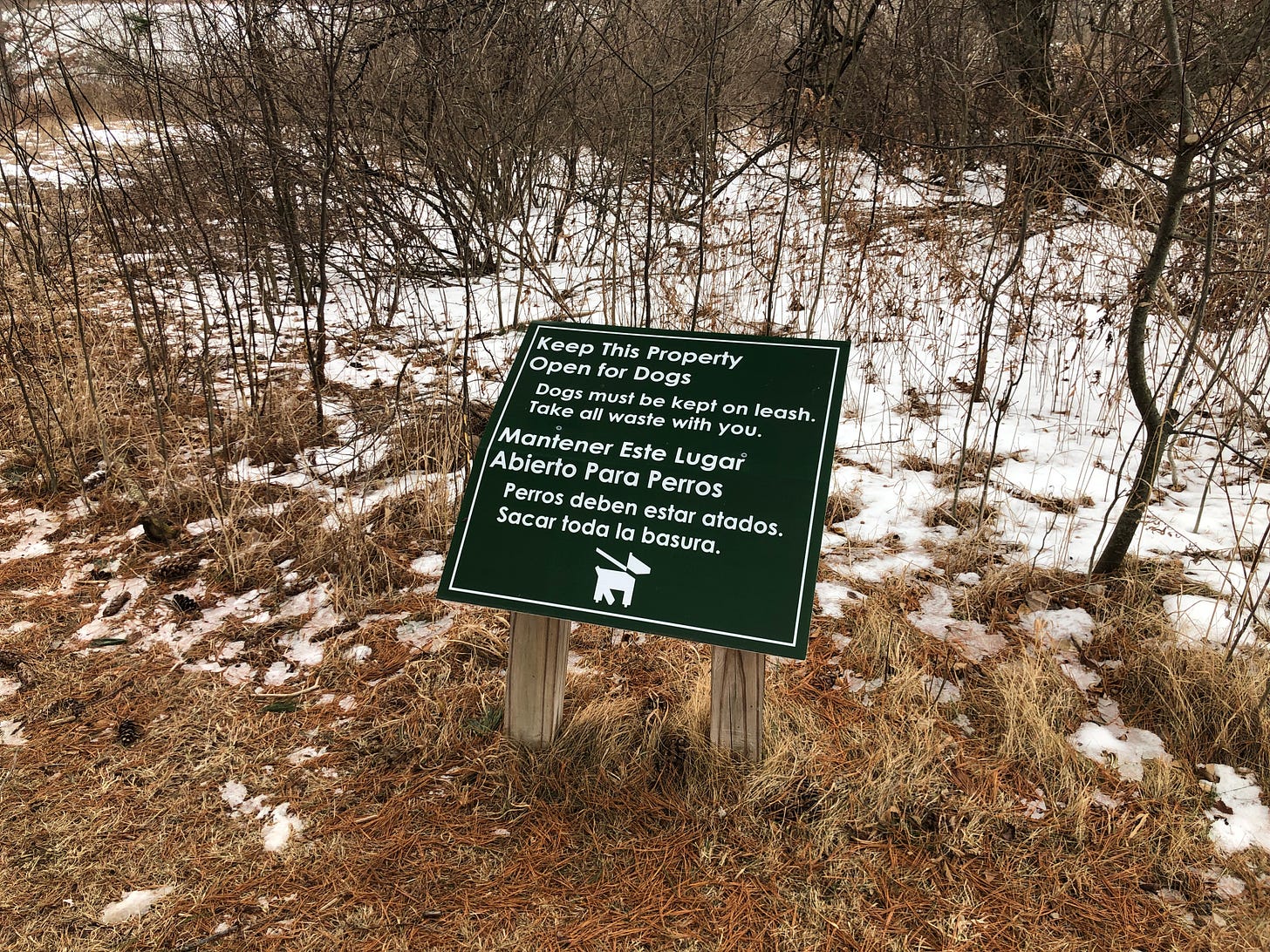
MF: [Do you have] any new measures [that] you're experimenting [with] to work on this concern about unleashed dogs?
HB: Yeah. We've got some signs on order, we've created some signs around the grassland birds specifically. Because knowing that this time of year is a really important time for the grassland birds, we're going to put some temporary signage up near the fields. At the entrance and at our kiosk, we have our rules around the dog leash policy. And I think sometimes it's helpful to have reminders throughout the site. So what we're going to try to do in the next few weeks is put up some signage that specifically talks about the grassland birds and why it's important to keep your dog leashed specifically for that reason. And so hopefully that'll help because I think it's easy to not think about it once you leave the parking lot.
MF: It's easy to be carried away by something.
HB: By a chipmunk.
MF: Yeah, by a chipmunk. So there was that sign where we walked in that says, both English and Spanish, please leash your dog. The signs you're talking about is separate from those signs.
HB: Yeah. These will be more specific about why you should leash your dog. So it'll have information about, not super detailed, but it will talk about, there's Bobolink here, and these birds nest on the ground and dogs off leash can have a really negative impact. It says it more eloquently than that, but that's the gist of it. And it'll be in areas where we know there are nesting birds. So at a trail intersection where we know within those fields there are nesting birds and hopefully that'll just be a reminder to people, please leash your dog.
MF: Any photos on it?
HB: I believe we put a photo of a Bobolink because they're so pretty.
MF: I think that'll be helpful because Bobolink is kind of a funny looking bird. It's like wearing a wig almost, a blonde wig.
HB: Yeah, I know. I've heard people refer to it as it looks like it's wearing a backwards tuxedo because it's like front is all black and then its back is like it's got a tuxedo on backwards. It is a very distinct bird. And I think like we were saying earlier, once you see it, you're gonna start seeing it everywhere. Like once you know what you're looking at. So there's definitely an image and then text explaining more why. So that coming soon. Hopefully in the next two weeks.
MF: And do you know, how do you expect to measure the effect of these signs?
HB: Our staff and volunteers are out here pretty regularly, so I think we will be able to have sort of a not a scientific study, but more of an anecdotal. And I feel like it also provides an opportunity to point out the signs when we have public programs here as a reminder. It just provides an additional point of information for people that when they come back or, when [or] if they bring their dog back here, they'll just be like, oh, right, there's that sign that says, there's birds nesting here.
MF: I love the idea. It also helps people to be like, okay, Bobolink is here, let's try to look. Not just about the “please don't do this” sort of message, but please try this, you might see it, because they live here.
Is there anything listeners can do to help your efforts on this concern of [off leash] dogs?
HB: Yeah, I think the biggest thing we've been talking about is sharing and spreading the word about grassland birds. So talking about [and] learning more about the grassland nesting birds and the challenges that they face. Coming to our programs that we have, we've got a number of programs this summer coming up. And the Alan Devoe Bird Club has bird walks that they're hosting, going to those types of programs just to learn more. And I mentioned earlier some of the volunteers that we have. Volunteering with us is a great way to learn more about how we're managing the sites and becoming more active in helping to manage and get out on the trails and meet people.
And then I think, I guess I just keep coming back to our education programs and learning more, because like you were saying, in your experience, the more you know, it provides just that added layer of information for when you're walking around a place.
MF: And you have more fun.
HB: And you have more fun, definitely. We want it to be fun.
MF: And where can people find those information of the events?
HB: Our website is columbialand.org and at the top there's an events button, and you just click that and you can sign up for our email list to get emails about the events. And then we're also on Instagram and Facebook and LinkedIn.
MF: All right, thank you very much.
HB: Thank you so much for having me. This was fun.
Bird-inspired music of the month
Bobolink-tunes by Sara Lula MacClellan, a professional whistler from the 1920s, and Australian guitarist Tim Cunningham. Also Avocet by Scottish folk musician Bert Jansch.




